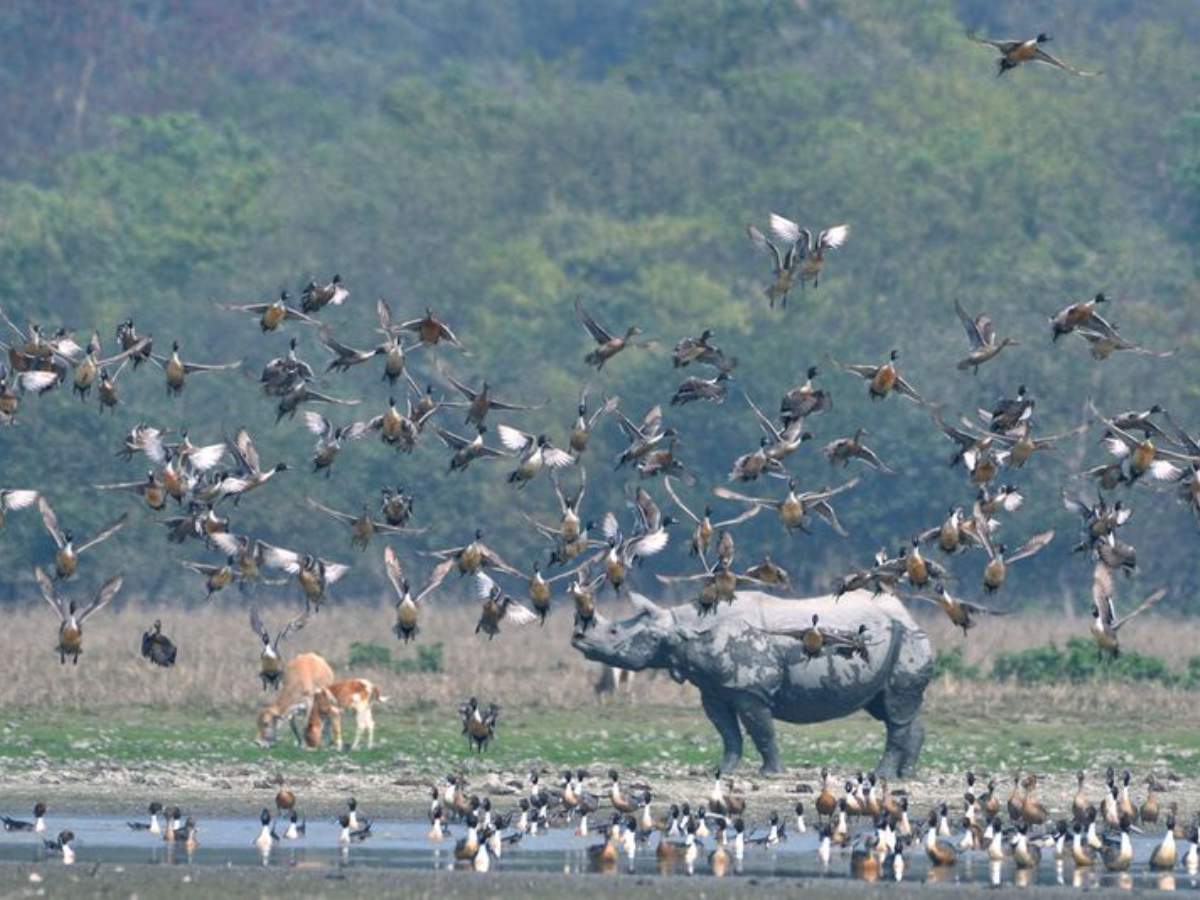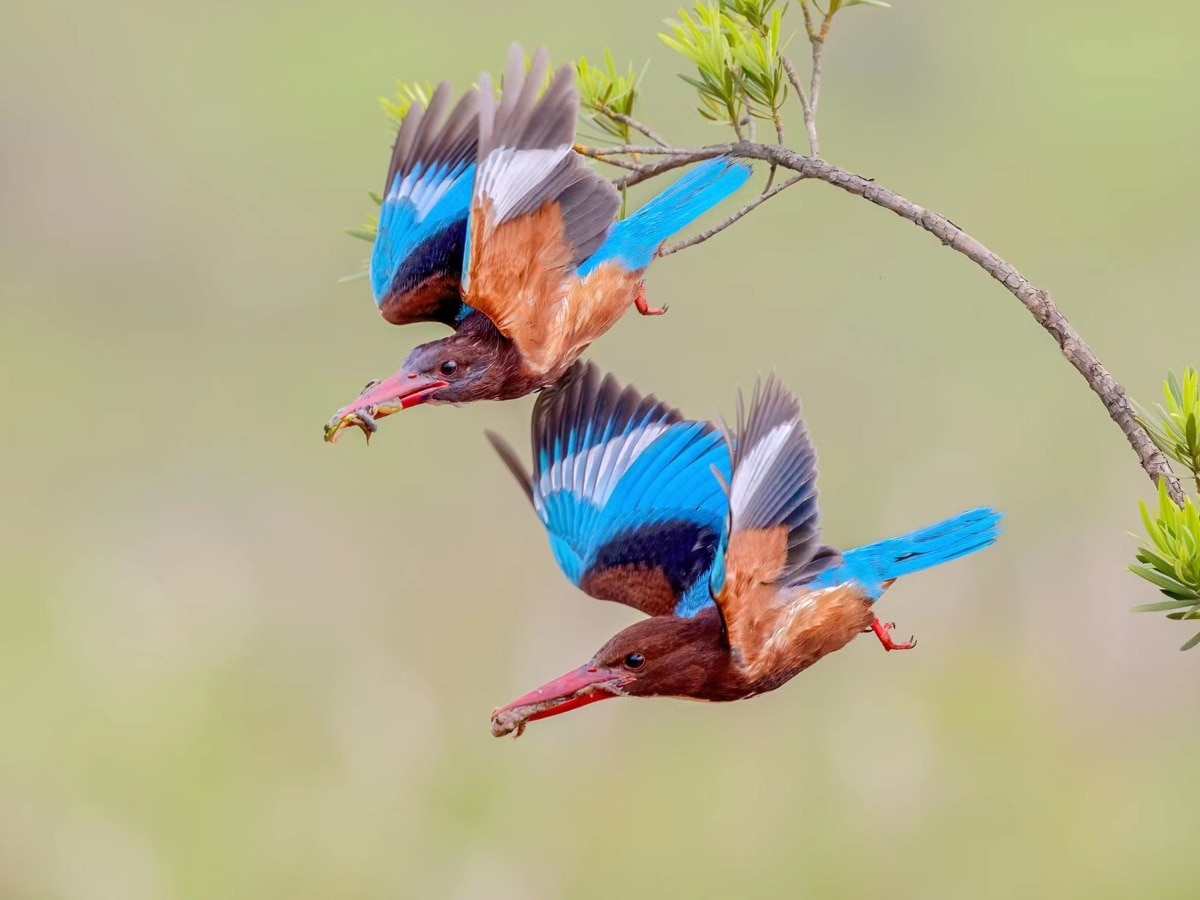Where The Birds Rule Sky, Must-Visit Birdwatching Hotspots Near Guwahati
As the main entrance to Northeast India Guwahati offers splendid views of its rich cultural diversity and attractive landscapes with its large concentration of bird species. Because of its close location to verdant forests and wetlands alongside hills Guwahati functions as the perfect base for nature observers and birdwatchers. People from all levels of birding experience can find perfect bird watching locations around Guwahati that deliver exceptional ornithological moments.
1. Deepor Beel Wildlife Sanctuary
Deepor Beel stands out as a key birdwatching site close to Guwahati because it functions as a Ramsar site and wildlife sanctuary. Migratory birds choose this freshwater lake as their essential habitat during winter season. Birdwatchers can observe more than 200 species of birds at this location which includes three particularly rare bird species: Spot-billed Pelican, Greater Adjutant Stork, and Black-headed Ibis. Egrets combine with herons and kingfishers and cormorants since these species make their permanent home inside the sanctuary. Observing wildlife at the park is most successful during early morning hours and during late afternoon periods.
2. Pobitora Wildlife Sanctuary

Pobitora Wildlife Sanctuary exists 50 kilometers outside Guwahati and preserves a thick concentration of Indian One-horned Rhinoceros. Along with its rhinoceros fame the site gains equal popularity with bird watchers due to its dense bird population. More than 200 types of birds inhabit the sanctuary where visitors can find those which reside there as well as seasonal migratory species. Crossing paths with waterbirds including Cotton Pygmy Goose, Northern Pintail, Common Teal and raptors including Crested Serpent Eagle, Oriental Honey Buzzard exists at this location. The grasslands combined with wetlands offer perfect areas to observe wildlife while photographers can take advantage of these habitats.
3. Chakrashila Wildlife Sanctuary
The Chakrashila Wildlife Sanctuary obtains its location 70 kilometers from Guwahati while stretching across both Dhubri and Kokrajhar districts. The Golden Langur conservation serves as the primary objective for which Assam established its first wildlife sanctuary. Bird enthusiasts can observe hill and forest birds which include the Rufous-necked Hornbill, Great Hornbill and Blue-bearded Bee-eater when they visit this sanctuary. Visitors should definitely explore this destination since it offers both a calm environment alongside magnificent landscape views.
4. Amchang Wildlife Sanctuary

The eastern part of Guwahati hides Amchang Wildlife Sanctuary which presents an excellent destination for those who enjoy birdwatching. This sanctuary occupies a territory spanning about 78 square kilometers along with tropical semi-evergreen and moist deciduous forests. Writers commonly spot White-throated Kingfishers together with Red Junglefowl and Asian Koels and countless woodpecker species near this location. Bird enthusiasts have the chance to experience wildlife in its entirety at this sanctuary which enables them to view multiple species including elephants and leopards because of its diverse ecosystem.
5. Brahmaputra River Islands (Majuli)
Majuli stands out as the world’s largest river island although it requires a 200-kilometer travel from Guwahati. Many bird species surround the island because its ecosystem includes wetlands and paddy fields and bamboo groves. During winter seasons Bar-headed Goose, Ruddy Shelduck and Greylag Goose migrate to the island territory of Majuli. The island contains at least two endangered species with Swamp Francolin and Bengal Florican among them. Visitors can explore Majuli to experience three different aspects of nature and cultural heritage while spotting birds in their natural habitat.
Conclusion
The surroundings of Guwahati hold great potential for birdwatchers who have diverse interests ranging from beginners to expert ornithologists. Every corner of Northeast India showcases its diverse wildlife through contrasting natural settings that include Deepor Beel’s wetlands and Kaziranga’s forests. These locations present viewers two benefits: observing remarkable birds while experiencing northeastern nature. Prepare your equipment in advance because early departure leads to everlasting memories from your journey.
News